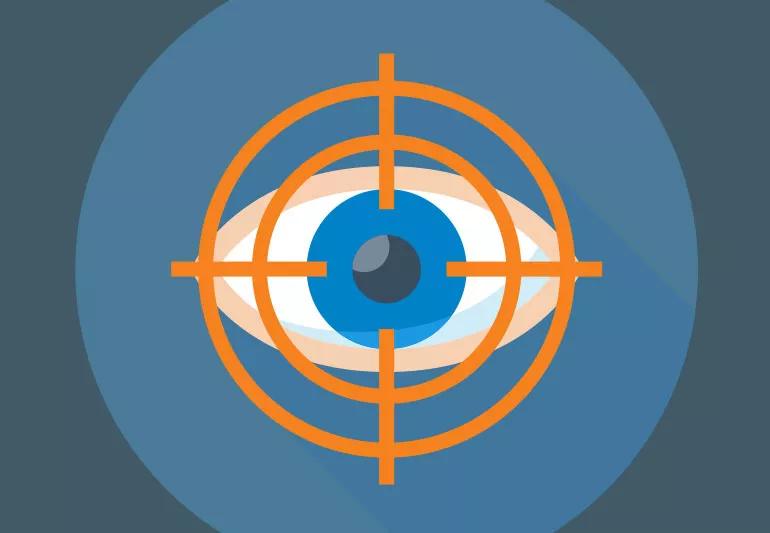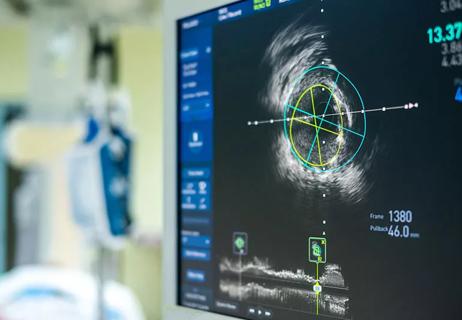Explore three common options

You might not know what LASIK stands for, but you probably know what it is. The laser eye surgery is one of the most commonly performed elective surgeries in the country today.
Advertisement
Cleveland Clinic is a non-profit academic medical center. Advertising on our site helps support our mission. We do not endorse non-Cleveland Clinic products or services. Policy
But it’s not the only vision correction surgery out there.
Today, a variety of laser procedures can correct nearsightedness, farsightedness and astigmatism by reshaping the cornea so that it reflects light properly onto the retina. This can cut down your need for glasses or contacts – in some cases, it might even eliminate the need for them all together. And most of the time, it can be done in an outpatient center in under an hour.
See the appeal?
Not everyone who wears glasses or contacts is a candidate for vision correction surgery, says ophthalmologist William Dupps, MD, PhD, but the majority of people likely qualify for at least one of the options.
People with the eye disorder keratoconus or with conditions that cause severe dry eye, or people who take the acne medicine isotretinoin (Accutane), are part of the group that may not be good candidates.
Let’s take a look at the pros and cons of some of the most commonly performed laser vision surgeries.
PRK was the first refractive surgery approved by the FDA. During the procedure, an ophthalmologist removes the outer surface layer of the cornea and uses a laser to reshape the cornea into a new curvature that fits the prescription of the patient’s eye.
Advertisement
Compared to its more modern counterparts, PRK is generally associated with some post-procedure discomfort and a slightly longer recovery time. But there are definitely cases where it may be the best option.
“This is probably better in cases where you’ve got a really high correction and your corneas are thin, or if the corneal shape argues for being more structurally conservative,” Dr. Dupps says.
Credited with popularizing refractive surgery after it hit the market in the late 1990s, LASIK delivers the same outcomes as PRK but with a quicker recovery time and less discomfort, Dr. Dupps says.
The downfall is that it’s more invasive than the others. During LASIK, the surgeon creates a flap of outer corneal tissue and opens the flap to reach the inside layers of the cornea, which are reshaped with the laser. Once that’s complete, the flap is put back into place, and patients experience a quick return of vision without much discomfort.
The majority of people that have corrective vision surgery have LASIK, but Dr. Dupps emphasizes that a patient must really qualify for it.
“We have to carefully balance the benefits of the LASIK approach with the overall impact of the flap and the tissue removal on an individual patient’s cornea,” he explains.
This newest iteration of laser eye surgery for nearsightedness uses a very precise laser to create a disk-shaped piece of tissue inside the cornea that can be removed through a small incision without the need for a flap.
It delivers similar vision correction as LASIK but without creating the flap, so it’s less disturbance to the corneal nerves and may be a better option for people who have dry eyes, Dr. Dupps says.
Work done in Dr. Dupps’ lab and others has also shown that SMILE preserves more of the native biomechanical strength of the cornea. It does, however, come with a slightly longer recovery time.
“We find that LASIK probably gives the sharpest return to vision on the first postoperative day, but SMILE follows closely behind, and PRK takes a little longer,” he says.
Most reputable centers will charge somewhere around $5,000 for laser correction of both eyes, Dr. Dupps says. The price tag is to cover the cost of the laser systems, the surgical team, servicing and maintenance of the laser equipment, the cost of before and after care, and fees paid by the clinic doing the procedure.
So how do you know which procedure is best? “Your candidacy for laser vision correction in general and for particular forms of treatment comes down to having a very thorough and focused exam with a specialist ,” Dr. Dupps says. “There are even some lens-based refractive surgery options for patients who are not ideal candidates for laser corneal surgery that can deliver excellent outcomes.”
Advertisement
Advertisement
Learn more about our editorial process.
Advertisement

Both procedures are about equally effective, but which is better depends on your vision needs and current conditions

Most recommended precautions center around minimizing bruising or swelling

Even one drink can have an impact on your cognitive function leading to slurred speech, blurred vision and impaired memory

Understand who may (and may not) benefit

Lorem ipsum dolor sit amet. Et odio Quis vel ipsam omnis eum alias deleniti et placeat impedit non voluptas galisum hic autem enim et cupiditate aliquid. Est beatae quidem non facilis autem ut commodi nisi aut tempore rerum et dolores voluptatem cum enim optio id sapiente quasi. Ad laboriosam officiis 33 cupiditate sequi ea voluptatum consectetur qui necessitatibus voluptate et quasi doloremque et facere explicabo quo explicabo officia

Seeking help through therapy can be an important step in improving your quality of life when you have UC

Type 2 diabetes isn’t inevitable with these dietary changes

Applying a hot or cold compress can help with pain